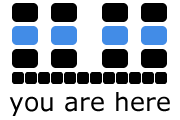Analysis
by Jentery, Curtis, Matthew & Jamie
The entries in this layer consist of our individual analyses of the folksonomic tagging system used in the context of The Library of Congress (LoC) Flickr Commons Project. At this stage of the project, our goal was to approach our subject as exploratively as possible with the goal of “seeing what emerged” from a “Standards in the Making” (SITM) approach. Our first move was to define a common object of analysis (the Flickr Commons archive) which we could then explore individually within the bounds of our own field-oriented critical investments. This left us free to explore the potential of our own particular understandings of an SITM approach (see the Introduction Layer); as these analyses developed, it became clear that each perspective produced its own set of critical questions for metadata standards and operated within a different theoretical terrain. The result is the four entries arrayed across this layer, each of which mobilizes a different approach to the analysis of folksonomic metadata and makes a different contribution to our argument for SITM.
In this layer, we have made no attempt to consolidate or standardize our individual analyses, other than what a common archive might provide; our goal was to “see what emerged” within and across our different critical investments. As such, any points of connection or conflict between the readings have emerged unpredictably as a result of the approaches taken, and can be considered symptomatic of the different field-oriented perspectives of our group. We consider any overlaps, repetitions, tensions, or conflicts between these readings a part of the work of the project itself, where productive dissonance is only part of “what emerges” from an SITM approach. In the Synthesis Layer which follows, we will assess these points of convergence/conflict in an attempt to define SITM as a critical practice.
What is the Library of Congress Flickr Commons Project?
According to the companion blog to the Flickr photo-archiving website, the Commons Project was conceived with two goals: “firstly, to increase exposure to the amazing content currently held in the public collections of civic institutions around the world, and secondly, to facilitate the collection of general knowledge about these collections, with the hope that this information can feed back into the catalogues, making them richer and easier to search” (The Flicker Commons Project, 2008). Flickr, of course, is the popular image and video hosting site which uses user-generated tags to create what the blog refers to as “an organic information system, derived of descriptive words and phrases made entirely from individual contributions.” Working in collaboration with the LoC in 2008 (whose early participation in the project was quickly followed by the Smithsonian, the New York Library, and a whole variety of universities, state history institutions, and national heritage groups), the Commons Project set out to “lend [the] wonderful power” of social tagging systems to these more traditional reference collections. The Commons, therefore, is a perfect opportunity to examine the context and work of user-generated metadata and, more generally, to engage larger questions of standardization in practice. In this sense, our analyses here can be read as critical inquiries into the role of metadata and the nature of the “organic information system” that is produced by folksonomic tagging. This investigation also, necessarily, runs up against some of the claims and assumptions that drive the Project itself – including the supposedly “descriptive” nature of tags, the relations between searchability and emergent categories, and the “organic” qualities of the system itself. In turning a critical lens on these dynamics, we have set out to the identify discursive and infrastructural constraints which work in the background to “standardize” social tagging, as well as to define the opportunities for writing and research that these systems afford outside of their standard articulation.
The photographs from the LoC collections, due to their residence in Flickr, can be tagged by any logged-in user of Flickr. Notes can also be placed directly on regions of the photo. Commenting is enabled on each photograph. These tags, notes, and comments become searchable, allowing these Web-based objects to be found in other intra- or inter-system searches. The photos materially become texts, with all the privileges and limitations that digital spaces afford. Each photograph in the Flickr collection contains the metadata assigned to it by the LoC, including date captured, call number, medium, and subject taxonomy. However, enclosing this metadata is a list of tags which have been assigned to the object by Flickr users. The space of the photo itself is annotated with little box-notes that appear on mouse over. Below the photo, a list of comments display questions, suggestions, and general remarks about the photograph.
Entries in the Analysis Layer: Decentralizing Folksonomies and Making Standards, SITM and the Organization of Racial History, Implicit Metadata and Ecologies of Ambivalence, Reading Metadata and the Rhetorical Situation
